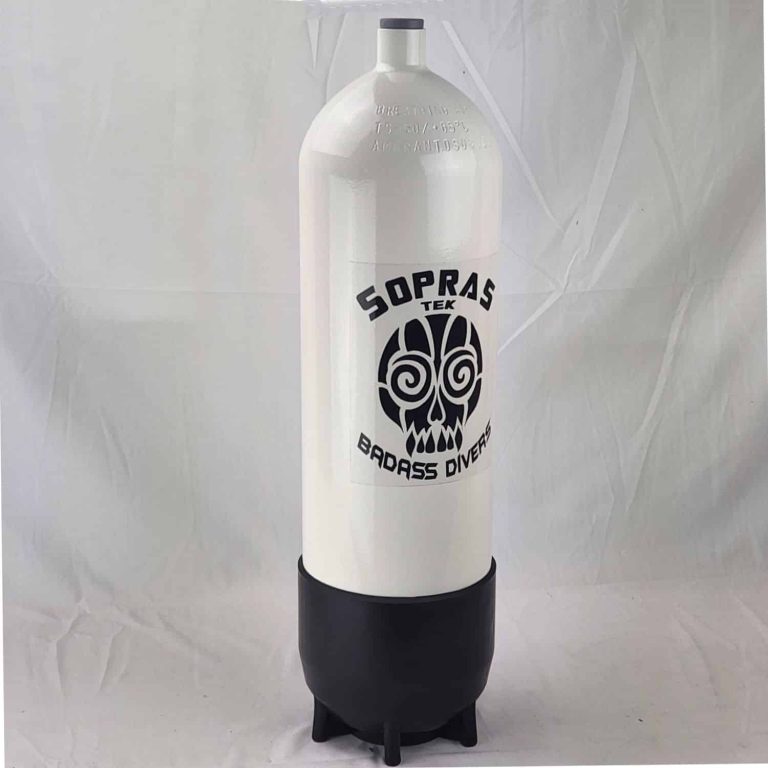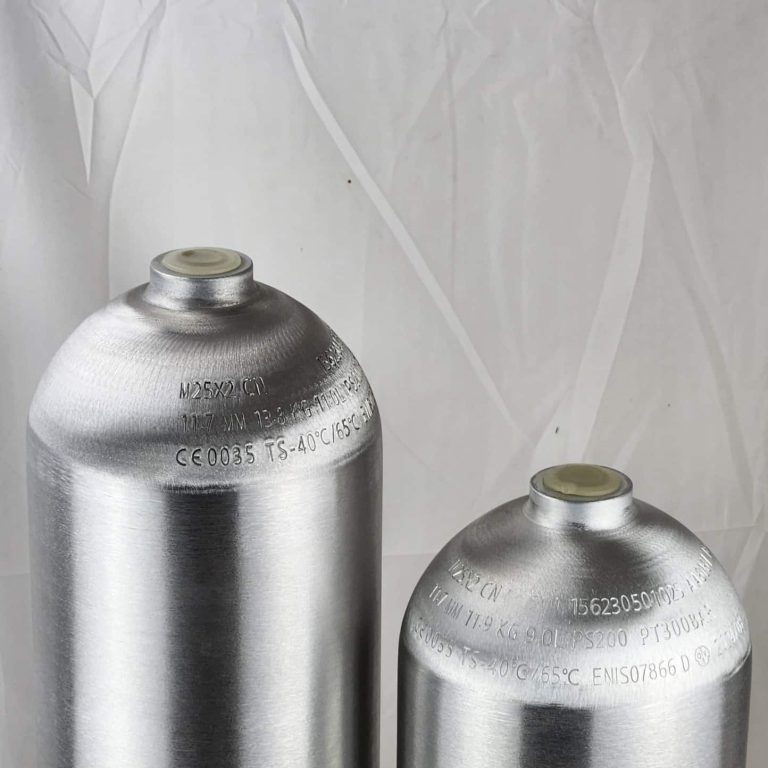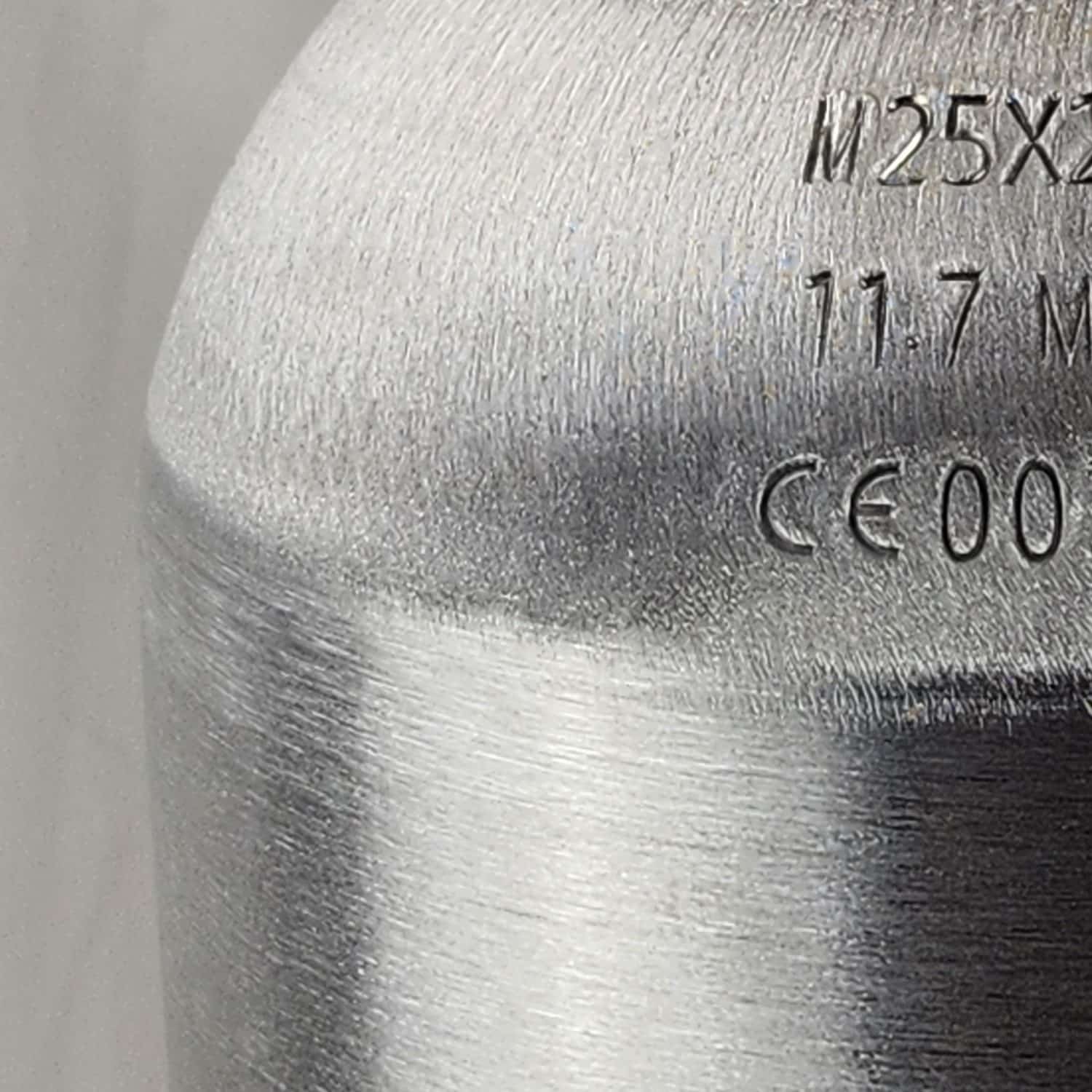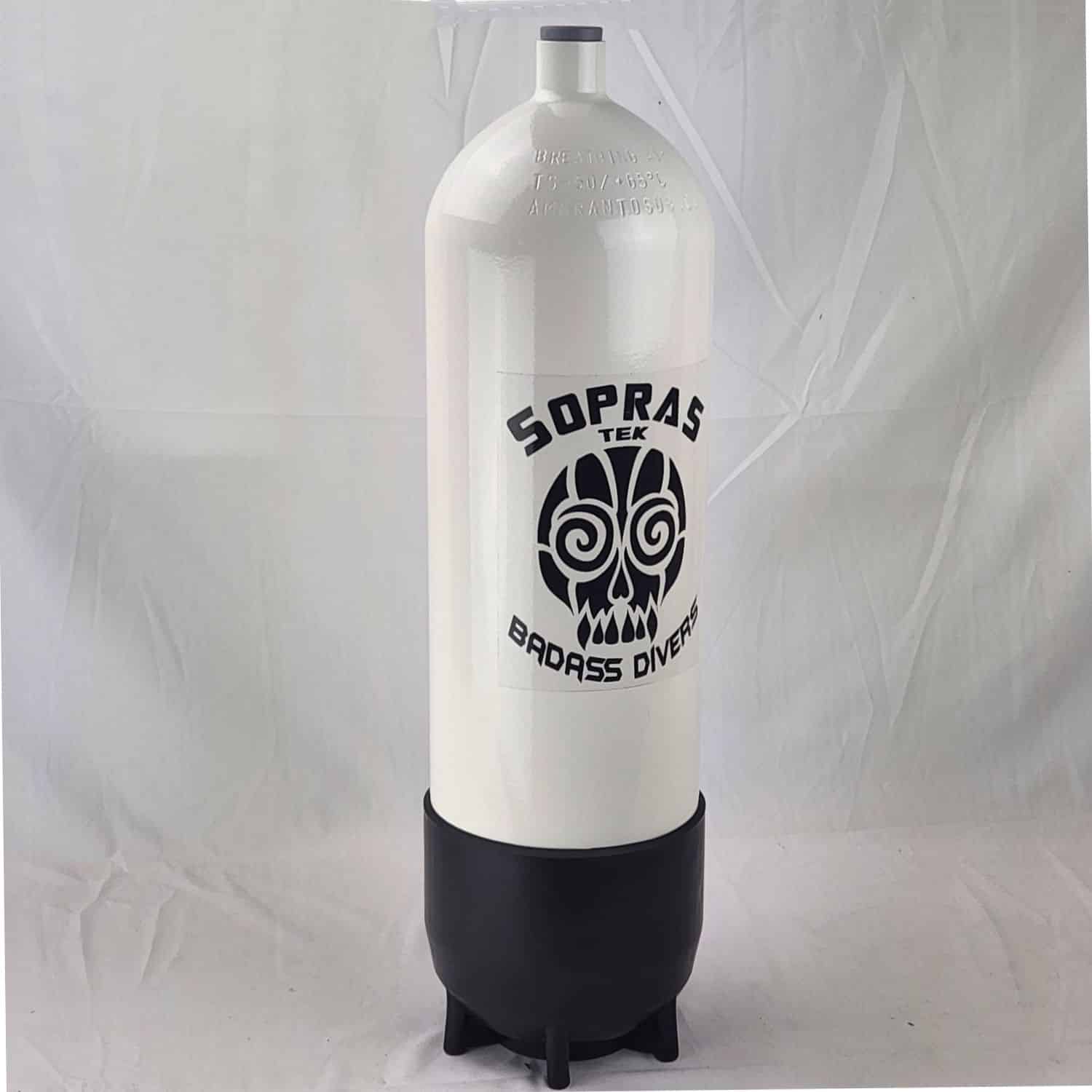Diving and pressure cylinders
for every type of diving
STEEL AND ALUMINUM CYLINDERS WITH CERTIFICATION.
FROM BEGINNERS TO TECHNICAL DIVING.
Steel vs. aluminium scuba tanks

STEEL DIVING CYLINDERS
MORE AIR FOR A BETTER PRICE
Steel scuba tanks are the most popular choice among experienced divers. Made from high-strength steel (often chromium molybdenum steel), they provide more air at the same size than aluminum variants. Thanks to negative buoyancy, they help with better stability underwater – you don’t have to fight with a floating tank at the end of the dive.
Economically, steel cylinders are more advantageous – the purchase price is lower and maintenance comparable to aluminum ones. The disadvantage is higher weight and the necessity of regular corrosion control, especially if the protective coating gets damaged.
Technical specifications:
- Volumes: 5L – 20L (most common 10L, 12L, 15L)
- Pressures: 200 bar, 232 bar, 300 bar
- Weight: approx. 12-18kg (depending on volume)
- Material: High-strength steel
- Larger air volume at the same size
- Lower purchase price
- Negative buoyancy (stability)
- Ideal for regular diving
- Available in all dive centers

ALUMINUM SCUBA TANKS
LIGHTER AND CORROSION RESISTANT
Aluminum diving cylinders are a premium choice for divers who want maximum comfort and durability. Made from aviation aluminum alloy (6061-T6), they are naturally corrosion-resistant – even surface damage doesn’t pose a risk of rapid degradation like with steel.
Their main advantage is lower weight, which you’ll appreciate when handling on land and during travel. Aluminum tanks are popular in dive centers worldwide due to their resistance and reliability. Positive buoyancy at the end of the dive can be an advantage for some divers (easier safety stop), but a disadvantage for others.
Technical specifications:
- Volumes: S63 (9.2L), S80 (11.2L), other models available
- Pressures: 207 bar, 232 bar
- Weight: approx. 11-15kg (1-2kg lighter than steel)
- Material: Aluminum alloy 6061-T6, brushed surface
- Lighter weight
- Corrosion resistant
- Positive buoyancy (easier safety stops)
- Ideal for travel
- Available in all dive centers
WHICH SCUBA TANKS FOR DIVING TO CHOOSE?
BEGINNERS
Recommendation:
10-12L steel or S80 aluminum tanks
Why:
Easy to use, available everywhere
EXPERIENCED DIVERS
Recommendation:
12-15L steel cylinders, higher pressures
Why:
More air, longer dives
TECHNICAL DIVING
Recommendation:
Twin-set, stage tanks, 300 bar
Why:
Redundancy, special gases
Steel vs Aluminum Diving Tank Comparison
| Property | Steel Tanks | Aluminum Tanks |
|---|---|---|
| Weight | Heavier (12-18kg) | ✓ Lighter (11-15kg) |
| Purchase Price | ✓ Lower (200-400€) | Higher (300-600€) |
| Air Volume | ✓ More at same size | Less air capacity |
| Corrosion Resistance | Risk when damaged | ✓ Naturally resistant |
| Lifespan | 20-30 years | ✓ 25-35 years |
| Buoyancy | ✓ Negative (stability) | Positive at end |
| Ideal For | Regular diving, tech diving | Travel, beginners |
SAFETY AND CERTIFICATIONS
Safe materials
High-strength steel and aviation aluminum alloy
REGULAR MAINTENANCE
Visual inspections and hydrostatic tests
PROPER USE
Adherence to working pressures and limits
Safety is priority number one in diving.
All our scuba tanks are made from quality materials and tested according to strict standards.
We recommend annual visual inspection and hydrostatic testing every 5 years.
MOST FREQUENTLY ASKED QUESTIONS ABOUT SCUBA TANKS
Steel or aluminum cylinder?
Steel ones are more economical with more air, aluminum ones are lighter and more resistant.
What diving tank volume for a beginner?
10-12L is ideal. Smaller build 10L, larger 12L.
How much does a quality scuba tank cost?
Steel 200-400€, aluminum 300-600€. Plus valve 50-150€.
How often should cylinders be serviced?
Visual inspection annually, hydrostatic test every 5 years.
Can I travel with a diving tank by plane?
Yes, it must be empty and without valve. Check the airline regulations.
What is a twin-set?
Two cylinders connected by a manifold for technical diving and redundancy.



